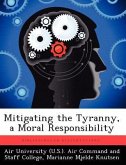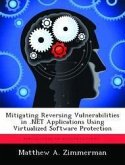Ethnic and sectarian conflict is a prevalent form of conflict today. Most of the conflicts on-going today and in occurring the past twenty years have been internal wars between rival groups with ethnic or sectarian identities. Though its causes vary, the brutal nature of its conduct and its far-reaching consequences make it a threat that the international community cannot ignore. As result, the international community has debated the extent to which it should intervene, if ever, in such conflicts. By its actions, the international community has demonstrated its willingness to intervene, often with military force, to mitigate ethnic conflicts. The past twenty years has seen a series of military interventions that have varied in purpose from humanitarian assistance to nation building. Although many of the military interventions have been only marginally effective at best, there is every reason to believe that the international community will continue to intervene to mitigate future conflicts. United States'; military doctrine and tactics, techniques and procedures (TTP) does not specifically address ethnic and sectarian conflict like it has recently done with insurgencies. Its peace operations and subordinate peace enforcement operations doctrine and TTP form the basis for thinking about how to approach military interventions amid ethnic and sectarian conflict. Two relevant peace enforcement operations to consider are separating belligerents and establishing protected areas. Those two peace enforcement tasks are based on an underlying assumption of separation of populations in ethnic conflict. Amid such conflict, the rival populations separate as people flee or are forcibly expelled from their homes. Intervention occurring in such conditions can apply variations of the two peace enforcement operations to maintain the separation of the rival populations and thereby lessen the conflict. The approach an intervention force pursues is largely dependent on the degree and g
Hinweis: Dieser Artikel kann nur an eine deutsche Lieferadresse ausgeliefert werden.
Hinweis: Dieser Artikel kann nur an eine deutsche Lieferadresse ausgeliefert werden.








